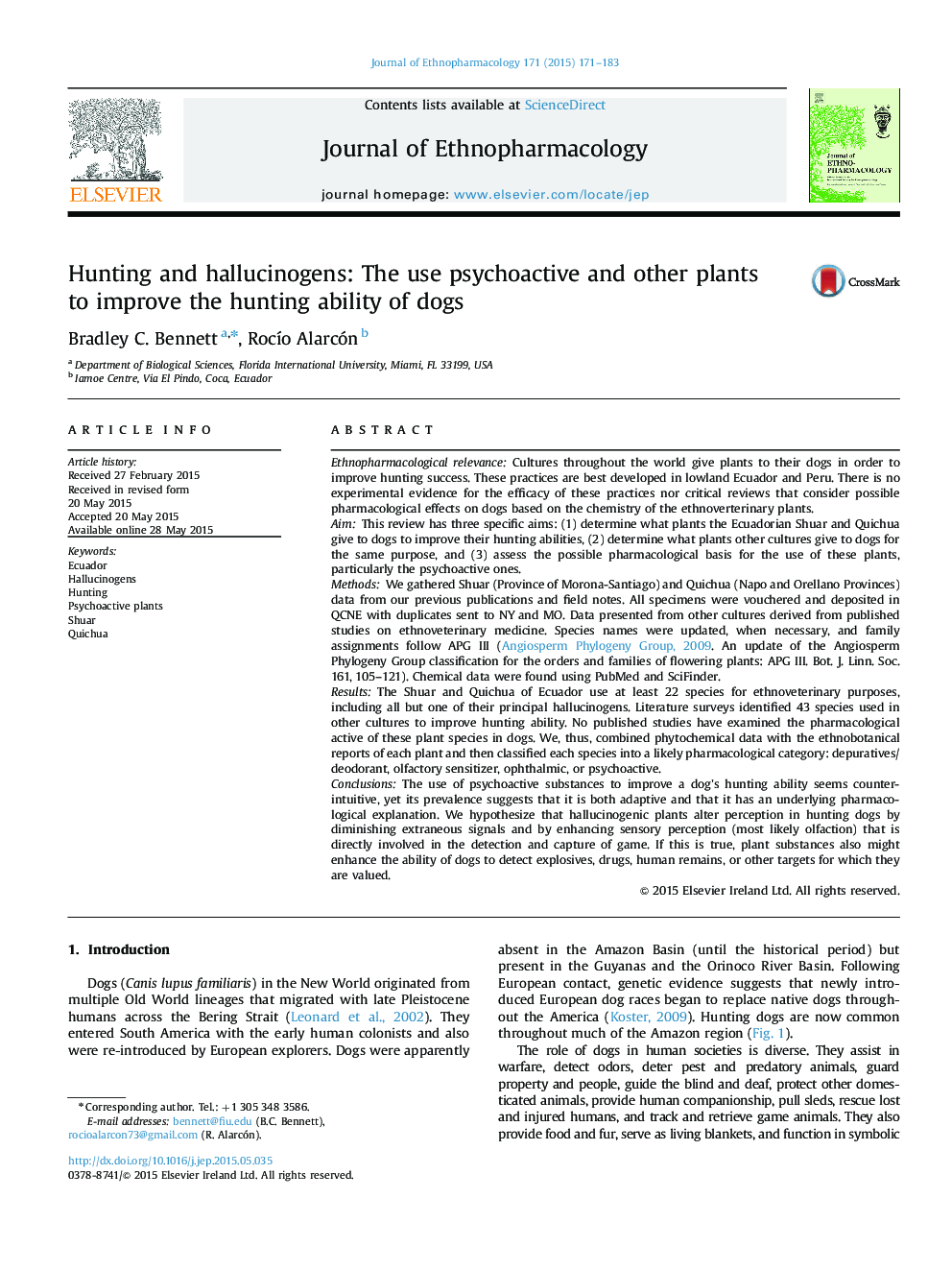| کد مقاله | کد نشریه | سال انتشار | مقاله انگلیسی | نسخه تمام متن |
|---|---|---|---|---|
| 5835344 | 1560391 | 2015 | 13 صفحه PDF | دانلود رایگان |
Ethnopharmacological relevanceCultures throughout the world give plants to their dogs in order to improve hunting success. These practices are best developed in lowland Ecuador and Peru. There is no experimental evidence for the efficacy of these practices nor critical reviews that consider possible pharmacological effects on dogs based on the chemistry of the ethnoverterinary plants.AimThis review has three specific aims: (1) determine what plants the Ecuadorian Shuar and Quichua give to dogs to improve their hunting abilities, (2) determine what plants other cultures give to dogs for the same purpose, and (3) assess the possible pharmacological basis for the use of these plants, particularly the psychoactive ones.MethodsWe gathered Shuar (Province of Morona-Santiago) and Quichua (Napo and Orellano Provinces) data from our previous publications and field notes. All specimens were vouchered and deposited in QCNE with duplicates sent to NY and MO. Data presented from other cultures derived from published studies on ethnoveterinary medicine. Species names were updated, when necessary, and family assignments follow APG III (Angiosperm Phylogeny Group, 2009. An update of the Angiosperm Phylogeny Group classification for the orders and families of flowering plants: APG III. Bot. J. Linn. Soc. 161, 105-121). Chemical data were found using PubMed and SciFinder.ResultsThe Shuar and Quichua of Ecuador use at least 22 species for ethnoveterinary purposes, including all but one of their principal hallucinogens. Literature surveys identified 43 species used in other cultures to improve hunting ability. No published studies have examined the pharmacological active of these plant species in dogs. We, thus, combined phytochemical data with the ethnobotanical reports of each plant and then classified each species into a likely pharmacological category: depuratives/deodorant, olfactory sensitizer, ophthalmic, or psychoactive.ConclusionsThe use of psychoactive substances to improve a dog׳s hunting ability seems counterintuitive, yet its prevalence suggests that it is both adaptive and that it has an underlying pharmacological explanation. We hypothesize that hallucinogenic plants alter perception in hunting dogs by diminishing extraneous signals and by enhancing sensory perception (most likely olfaction) that is directly involved in the detection and capture of game. If this is true, plant substances also might enhance the ability of dogs to detect explosives, drugs, human remains, or other targets for which they are valued.
170
Journal: Journal of Ethnopharmacology - Volume 171, 2 August 2015, Pages 171-183
